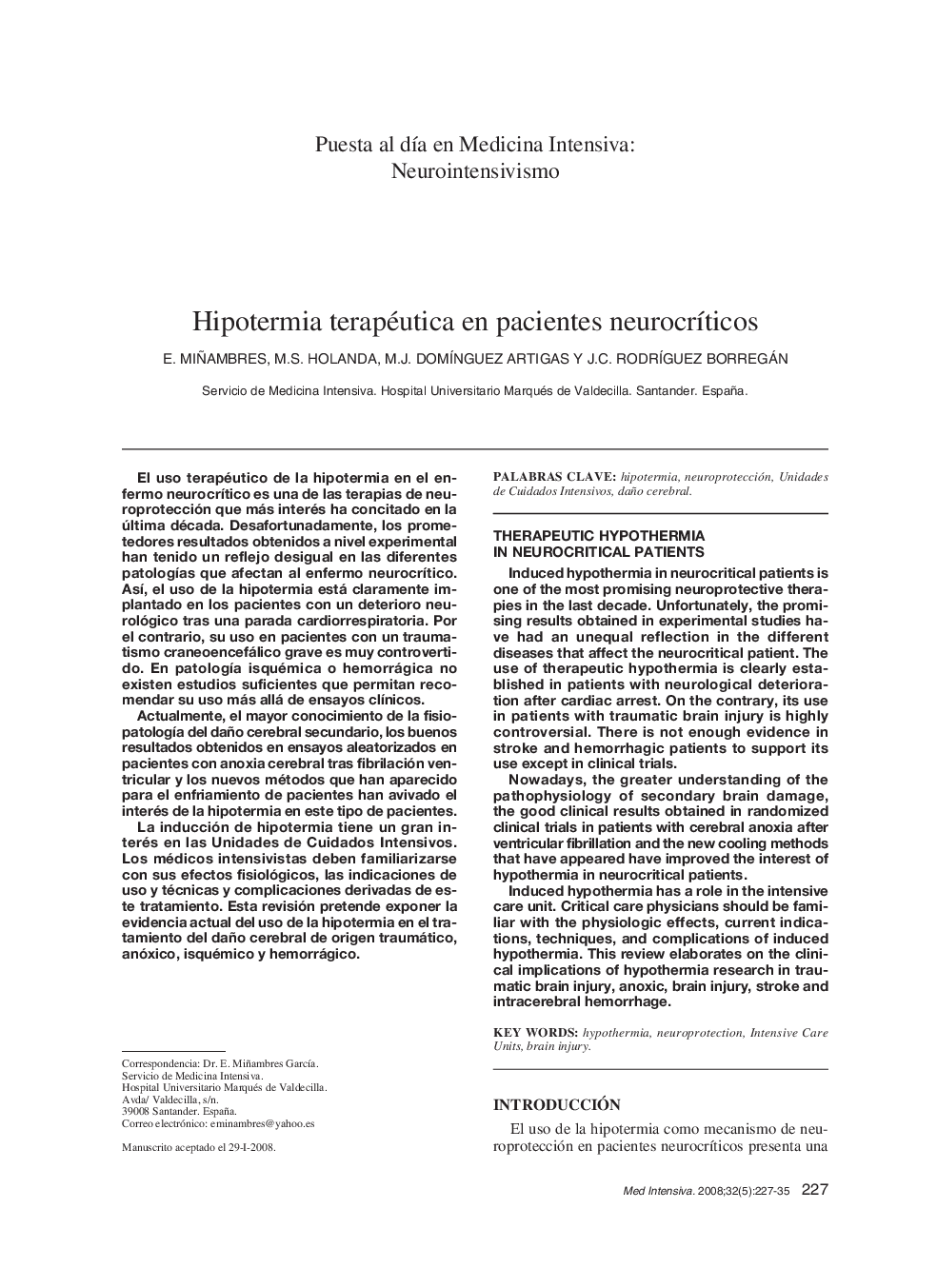| Article ID | Journal | Published Year | Pages | File Type |
|---|---|---|---|---|
| 3113875 | Medicina Intensiva | 2008 | 9 Pages |
El uso terapéutico de la hipotermia en el enfermo neurocrítico es una de las terapias de neuroprotección que más interés ha concitado en la última década. Desafortunadamente, los prometedores resultados obtenidos a nivel experimental han tenido un reflejo desigual en las diferentes patologías que afectan al enfermo neurocrítico. Así, el uso de la hipotermia está claramente implantado en los pacientes con un deterioro neurológico tras una parada cardiorrespiratoria. Por el contrario, su uso en pacientes con un traumatismo craneoencefálico grave es muy controvertido. En patología isquémica o hemorrágica no existen estudios suficientes que permitan recomendar su uso más allá de ensayos clínicos.Actualmente, el mayor conocimiento de la fisiopatología del daño cerebral secundario, los buenos resultados obtenidos en ensayos aleatorizados en pacientes con anoxia cerebral tras fibrilación ventricular y los nuevos métodos que han aparecido para el enfriamiento de pacientes han avivado el interés de la hipotermia en este tipo de pacientes.La inducción de hipotermia tiene un gran interés en las Unidades de Cuidados Intensivos. Los médicos intensivistas deben familiarizarse con sus efectos fisiológicos, las indicaciones de uso y técnicas y complicaciones derivadas de este tratamiento. Esta revisión pretende exponer la evidencia actual del uso de la hipotermia en el tratamiento del daño cerebral de origen traumático, anóxico, isquémico y hemorrágico.
Induced hypothermia in neurocritical patients is one of the most promising neuroprotective therapies in the last decade. Unfortunately, the promising results obtained in experimental studies have had an unequal reflection in the different diseases that affect the neurocritical patient. The use of therapeutic hypothermia is clearly established in patients with neurological deterioration after cardiac arrest. On the contrary, its use in patients with traumatic brain injury is highly controversial. There is not enough evidence in stroke and hemorrhagic patients to support its use except in clinical trials.Nowadays, the greater understanding of the pathophysiology of secondary brain damage, the good clinical results obtained in randomized clinical trials in patients with cerebral anoxia after ventricular fibrillation and the new cooling methods that have appeared have improved the interest of hypothermia in neurocritical Patients.Induced hypothermia has a role in the intensive care unit. Critical care physicians should be familiar with the physiologic effects, current indications, techniques, and complications of induced hypothermia. This review elaborates on the clinical implications of hypothermia research in traumatic brain injury, anoxic, brain injury, stroke and intracerebral hemorrhage.
